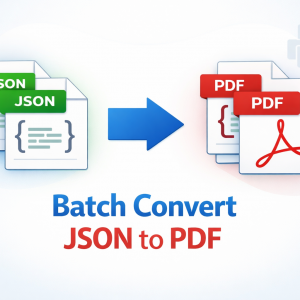In an increasingly competitive sales landscape, Configure, Price, Quote (CPQ) software has become essential for companies selling complex or customizable products. However, for many organizations, simply implementing CPQ isn't enough—the real challenge lies in driving user adoption. One innovation making a significant difference in this regard is the visual configurator.
This blog explores how visual configurators enhance CPQ software adoption by making the product configuration process more intuitive, engaging, and accurate.
What Is a Visual Configurator?
A visual configurator is an interactive tool that allows users to customize and visualize products in real-time. Unlike traditional text-based configuration tools that rely on dropdown menus and static inputs, visual configurators provide a graphical interface—often in 2D or 3D—where users can manipulate product options and immediately see the changes.
For example, a sales rep configuring a customized piece of industrial machinery or a customer designing a modular sofa can use a visual configurator to see exactly what the final product will look like as options are selected.
The CPQ Challenge: Adoption and Complexity
While CPQ software streamlines quoting and pricing, it often struggles with adoption barriers, especially among sales teams and customers who are not technically inclined. Common challenges include:
-
Complex product logic: Users can feel overwhelmed by technical specifications.
-
Clunky user interface: Traditional CPQ tools may require extensive training.
-
Lack of clarity: Users may not fully understand what the configured product will look like or how selected options interact.
When adoption suffers, so does the return on investment in CPQ systems.
This is where visual configurators shine.
1. Enhancing User Experience Through Interactivity
One of the key drivers of software adoption is ease of use. Visual configurators drastically improve user experience by replacing text-heavy interfaces with intuitive visuals.
Benefits Include:
-
Drag-and-drop functionality
-
Real-time visualization of changes
-
Interactive 3D models
These features empower users to explore product configurations without needing in-depth product knowledge. Sales reps, customers, and partners can confidently create configurations, increasing their engagement with the CPQ system.
2. Reducing Configuration Errors
One of the biggest benefits of CPQ is eliminating errors in the configuration and pricing process. However, traditional CPQ systems often rely on rule-based constraints that are not always obvious to the user.
Visual configurators make these constraints visible. For instance:
-
Incompatible options are automatically grayed out or removed
-
Selections update dynamically based on dependencies
-
Invalid combinations can’t be visualized
This real-time feedback reduces mistakes, shortens training time, and ensures that users generate error-free quotes, which ultimately boosts trust in the CPQ system.
3. Accelerating the Sales Cycle
Time is money—especially in sales. Visual configurators speed up the sales cycle by enabling sales reps and customers to configure products faster and with more confidence.
How This Helps:
-
Sales reps spend less time explaining product options.
-
Customers can visualize products on their own, reducing back-and-forth communication.
-
Quotes are generated faster due to fewer errors and reduced rework.
When CPQ tools become faster and easier to use, adoption naturally follows.
4. Empowering Self-Service and E-Commerce
As B2B buyers increasingly expect B2C-like experiences, visual configurators enable self-service and online configuration. This is especially important in:
-
Direct-to-customer portals
-
Partner platforms
-
E-commerce storefronts
With visual configurators embedded in these platforms, customers can configure products independently while still benefiting from CPQ-driven pricing and rules. This reduces the burden on sales teams and encourages greater engagement with the platform.
5. Supporting Mobile and Field Sales Teams
Salespeople are not always at their desks. Field sales teams often need tools that are:
-
Mobile-friendly
-
Easy to demonstrate in real-time
-
Responsive on tablets or smartphones
Visual configurators, especially web-based or cloud-hosted versions, make it easy to show and configure products during onsite meetings or trade shows. This portability improves CPQ accessibility, making salespeople more likely to use it wherever they are.
6. Enhancing Customer Confidence and Satisfaction
Customers are more likely to move forward with a purchase when they can see what they’re buying. Visual configurators:
-
Eliminate ambiguity
-
Provide a sense of ownership
-
Offer instant feedback on design choices
This clarity enhances customer confidence, which not only boosts sales but also lowers return rates and improves satisfaction. Satisfied users and customers are more likely to use and recommend the system—fueling wider adoption.
7. Enabling Better Collaboration Between Teams
CPQ systems are not used by sales teams alone. Engineering, marketing, operations, and customer service also rely on accurate configuration data.
Visual configurators make it easier for different teams to:
-
Review configurations together
-
Understand customizations visually
-
Provide input based on real-time visuals
This cross-functional clarity reduces miscommunication, accelerates production, and enhances adoption across departments.
8. Increasing ROI on CPQ Investment
Ultimately, the goal of any CPQ investment is to improve sales efficiency and profitability. But without widespread adoption, CPQ software can fail to deliver ROI.
Visual configurators boost:
-
User engagement
-
Configuration accuracy
-
Sales velocity
These factors compound to create a stronger return on investment by ensuring that your CPQ platform becomes a core part of the sales process—not just a tool for the back office.
Conclusion: Visual Configurators Are the Missing Link
While CPQ software provides a powerful framework for configuring and quoting complex products, visual configurators are the missing link that makes these systems truly user-friendly and effective. By enhancing usability, reducing errors, speeding up sales, and encouraging self-service, visual configurators significantly improve CPQ adoption across the board.
Whether you're selling industrial machinery, modular furniture, or custom software packages, integrating a visual configurator into your CPQ strategy can turn a complex process into a competitive advantage.






